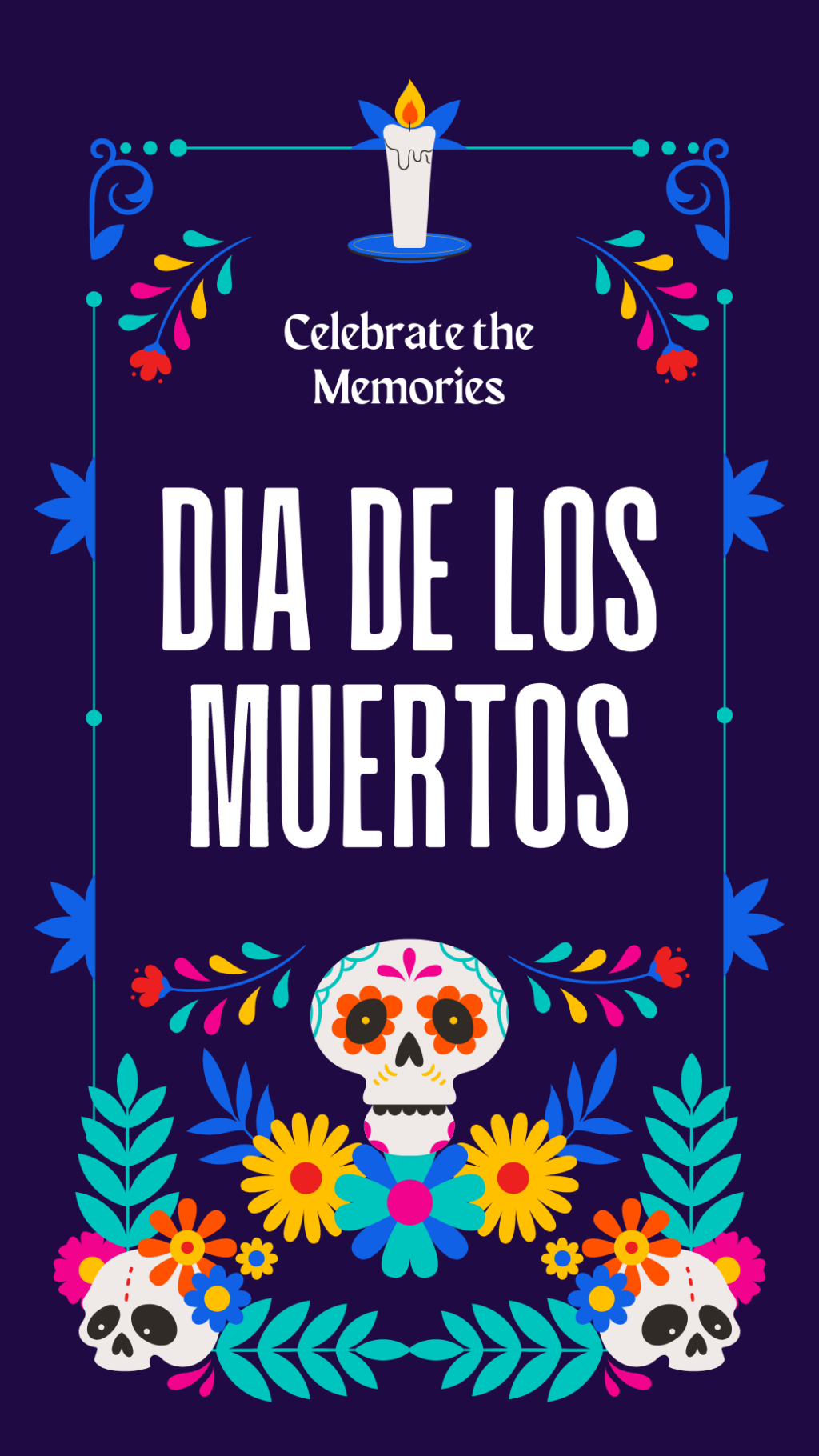Day Of The Dead (Dia De Los Muertos)- A Complete History

The two-day Day of the Dead (Dia de los Muertos) festival brings the living and the dead together. To remember their departed family members who have passed, families make ofrendas (Offerings). These altars are embellished with images of the deceased, bright yellow marigold flowers, and the honoree’s preferred snacks and beverages. The deceased souls are thought to be encouraged to attend the afterlife by the offerings because they can hear the prayers, smell the food, and participate in the festivities!
Also Read: –Americans People’s Celebrate Christmas with Many Traditions
The Day of the Dead is a unique celebration that honours both life and death. It is unlike any holiday where joy is substituted for sadness.
Things to know about the Day of the Dead
Skulls, skeletons, and graveyard visits are used to mark Da de los Muertos throughout Mexico, but what does this well-known holiday actually signify?
On the Day of the Dead, family members are remembered by having a meal together just as they would have while they were still alive.
Also Read: –Christmas Markets in the USA: Opening Dates for 2022
One thing is certain: Day of the Dead, also known as Da de los Muertos, is not Halloween in Mexico.
Although connected, the two yearly celebrations have very different traditions and tenors. The Day of the Dead celebrations take place during the first two days of November in a burst of colour and life-affirming delight, in contrast to Halloween, which celebrates fear and mischief on the final night of October. Even if the theme is death, the goal is to show respect and affection for departed family members. In towns and cities all around Mexico, celebrators dress in eccentric costumes and makeup, have parades and parties, sing and dance, and make offerings to loved ones who have passed away.
When is theDay of the Dead?
Nov 1st, 12am
Dia de los Angelitos (Spirits of the children)
The event known as Dia de los Angelitos (Day of the Little Angels) begins at midnight on November 1st, when it is thought that all deceased children’s spirits will be reunited with their families for a whole 24-hour period. To entice a visit from their deceased children, families erect an altar, known as an ofrenda, filled with the deceased child’s favourite foods, candies, toys, and photos. On a sugar skull, the names of the deceased children are frequently written.
Nov 2nd, 12am
Día de los Difuntos (Spirits of the adults)
The festivities change to honour the lives of the deceased adults at midnight on November 2nd. Like the night before, this one is full of smiles and enjoyable memories. With the addition of tequila, pan de muerto, mezcal, pulque, and jars of atole, the Ofrendas adopt a more stag-like character. In addition, families enjoy time spent together playing games, remembering loved ones, and dancing to the music of the local band.
Nov 2nd, Noon
Día de los Muertos (Spirits of all the dead)
The public Dia de Muertos festivities and grand finale are held the following day. In more modern times, people congregate in their cities, dressed as skeletons with their faces painted with calaveras, and hold street parades. On the final day, relatives frequently visit cemeteries to adorn the graves with marigold flowers, presents, and sugar skulls bearing the names of the deceased. The gravestone should be cleaned and coloured again as is traditional.
How people celebrate Day of the Dead
Calaveras “Skull”
The Day of the Dead is marked by an abundance of calaveras. The skulls are frequently depicted grinning, as if to mock death itself. They come in a variety of shapes, including sugary treats, clay embellishments, and the most enduring: face painting. Sugar skulls are embellished and placed on family members’ altars. Calaveras, also known as sugar skulls, are decorative skulls created (often by hand) from clay or sugar (known as alfeniques) and are used in Mexico’s Day of the Dead celebration.
Although skulls and skeletons are the Day of the Dead’s most iconic symbols, the Ofrenda is the custom that has the most significance (Spanish for offering). The Ofrenda, a gathering of offerings intended for the individual being honoured, is the focal point of the entire ceremony.
The table is covered in a vibrant oilcloth, and there are pictures and other belongings of the deceased person arranged on top of it. The offerings, which range from traditional Mexican food to other things that reflect the honoured person’s individual likes, are put on the lowest half of the altar.
Also Read: –Holiday, Winter & Christmas Markets in Illinois: Opening Dates for 2022
What Exactly Day of the dead is not Halloween
Due to the season of the year, Day of the Dead is occasionally misunderstood as “Mexican Halloween,” although this is not the case. Despite having similar afterlife ideas at their inception, the two celebrations now are radically dissimilar. Halloween was originally a Celtic Festival when people would light bonfires and dress up in costumes to fend off ghosts, but it has since evolved into a custom of trick-or-treating and dressing up. The majority of Mexico does not practise donning spooky costumes or decorating your home with spiders and bats.
It’s Joyful Rather Than Gloomy.
While most of us consider death as a tragic occurrence, individuals who observe the Day of the Dead see it as a pleasant aspect of life. Because of this, during the festival you will see colourful skulls and skeletons all over. They are frequently observed grinning, sometimes even making fun of death. This perspective on death first emerged during the one-month-long Aztec festival when they honoured the deceased and paid tribute to Mictlancihuatl, the goddess of death who guarded and assisted their loved ones in the afterlife.
Traditions Vary From Country To Country.
It may surprise you to learn that Day of the Dead celebrations are not exclusive to Mexicans. It is a holiday that is widely observed all across the world. In actuality, Day of the Dead and All Souls Day (also known as All Saints Day) are both observed by numerous religious communities. The practice of remembering the deceased is widely observed around the world, but Day of the Dead is distinctive due to its customs, which include the ofrenda, the significance of life and death, the use of calaveras, the La Catrina-inspired fashion, and more recently, street celebrations.







